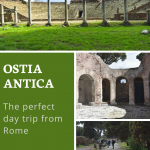Ostia Antica: The Perfect Day Trip from Rome
Just 30 kilometers away from Rome is Ostia Antica, one of the most well-preserved ancient cities in Italy and a perfect day trip from Rome.
NOTE: This article is a guest post by Alexandrina Nickolova.
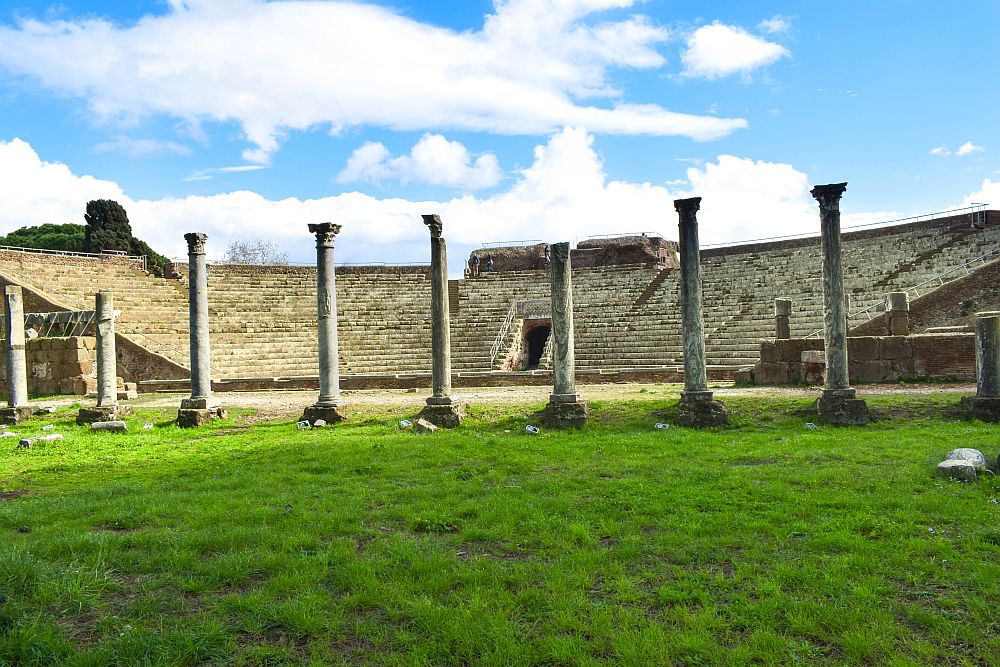
Disclosure: This article contains affiliate links. If you click on a link and make a purchase, I will receive a small commission. This will not affect your price.
History of Ostia Antica
Ostia Antica was founded in 620 BC at the estuary of the Tiber river, which connects Rome with the Tyrrhenian Sea. The city was of great importance to the Eternal City, Rome, an important ever-flourishing commercial center.
In the beginning, Ostia Antica was built to support and protect Rome. Later, the city became an important trade center and supplied Rome with all sorts of commodities coming from afar.
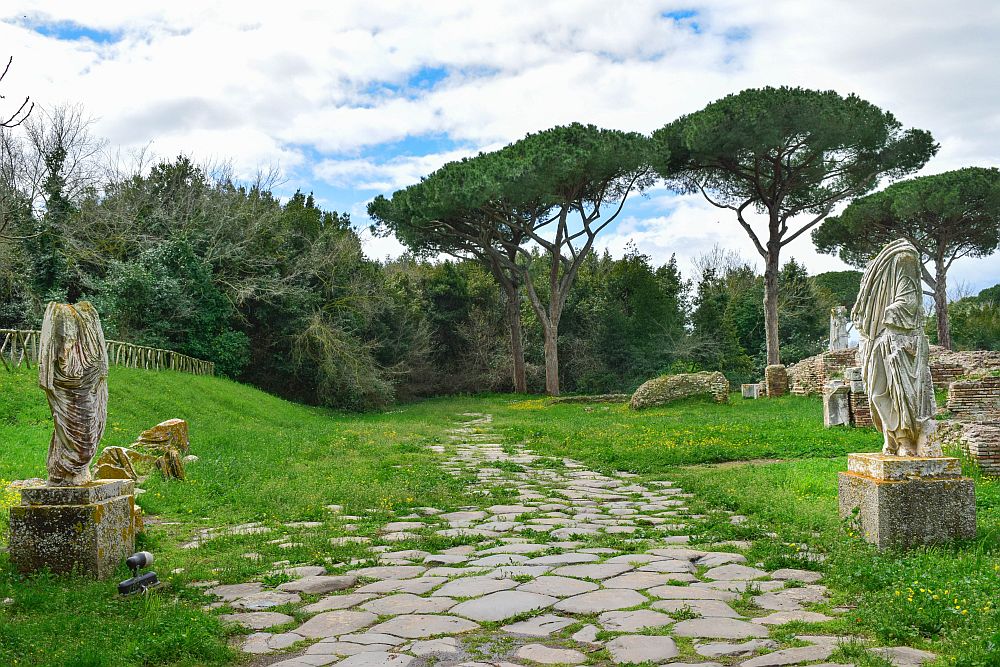
Ostia Antica was at the peak of its prosperity around the 2nd century AD when Emperor Claudius added a large harbour nearby at Portus. Later, Emperor Trajan added another harbour inland, connecting to Claudius’s harbour via a canal. During that period, there were many improvements done in the city and many buildings were built. Among them was the renovated Forum and many new baths, public warehouses and residential buildings.
However, like many Roman cities, Ostia Antica slowly decayed, once the commercial activities were moved elsewhere. This led to the abandonment of the city around the 6th century. Ever since, the city has not been inhabited, which helped its good preservation.
The archaeological site of Ostia Antica
The archaeological site is spread over 50 hectares near the banks of the Tiber and is one of the most well-preserved ancient cities in the world. The remains of the city are well-kept and there is barely any change to most of the buildings since ancient times. It now consists of many buildings such as temples, public baths, barracks, a theatre, a Forum, counsel houses, residential buildings and the world’s most well-preserved ancient wine bar.
Via Ostiense
The first important remain in the archaeological site is the Via Ostiense. This was the main road that connected the city of Rome and Ostia Antica. It is a huge Roman cobbled road that goes through the whole ancient city to its end at the Tyrrhenian Sea.
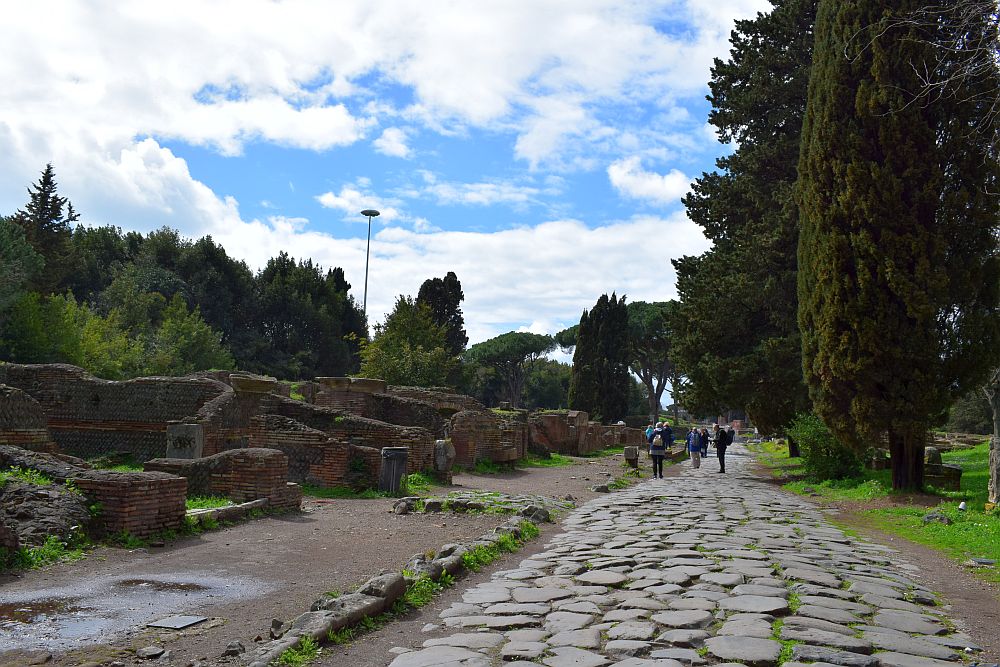
Baths of Neptune
Following the path, one would first encounter the baths of Neptune and the Barracks nearby. Neptune’s baths were a huge bathing complex in the city of Ostia Antica. They are mostly known for their well-preserved mosaics, representing Neptune and his wife.
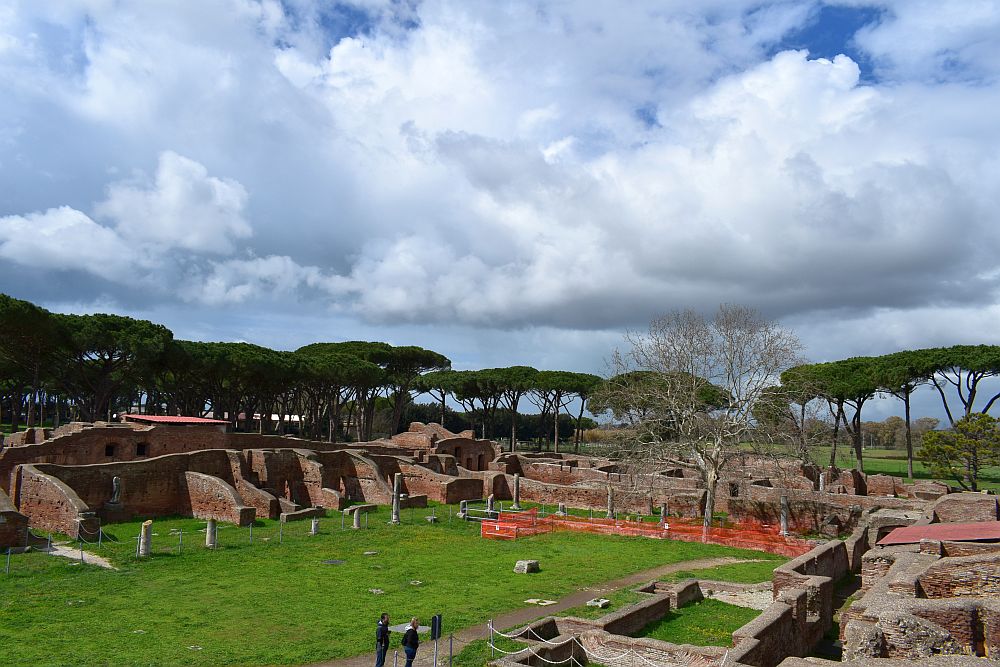
The Barracks
Next to them are the Barracks or the houses of the ancient firemen. Back then, when the ancients used oils and torches, there were lots of fires. Thus, the Barracks were built close to the baths, so they could easily put out the fires.
Book a guided tour to Ostia Antica from Rome.
Theatre
Close to the Barracks is the famous theatre of Ostia Antica. The theatre played an important role in the life of the Romans and was one of the most important buildings in the city. It was built in the 2nd century BC and provided the ancient Romans with lots of entertainment like recitals, drama performances and even mini sea-battles.
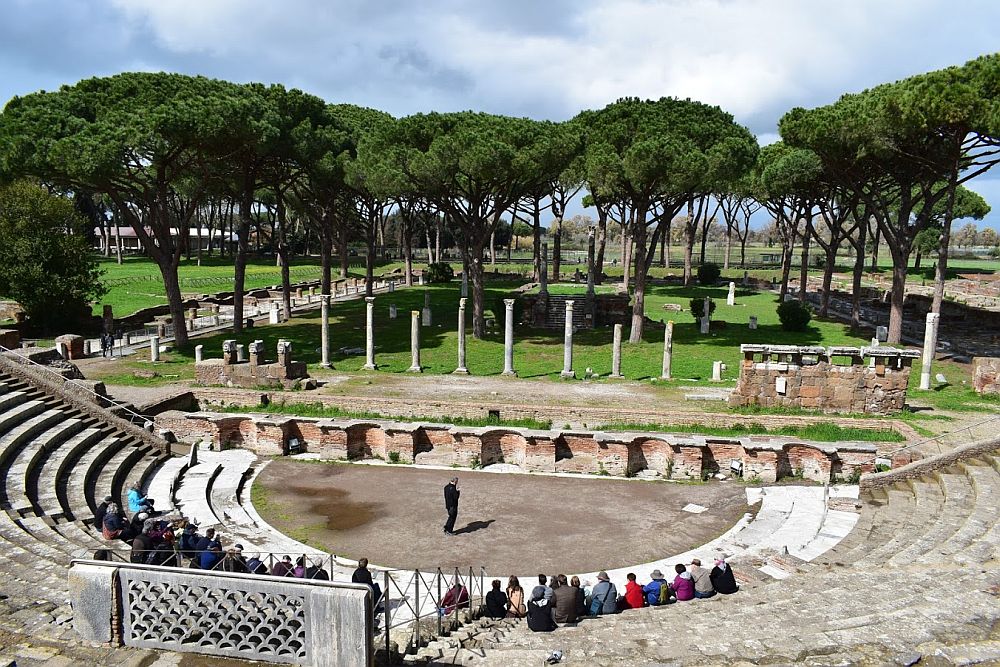
Square of the Guilds
Exactly in front of the theatre is the Temple of the Imperial Annona. Right behind it is the the Square of the Guilds, known as the most important trade center in the whole city. Around it there are many remains of rooms, known as stationes or offices, which were used by traders and marine advisors. The stationes are believed to be the place where merchants and sailors came to trade or receive a consultation from more experienced sailors. This place was the most important part of Ostia Antica and was responsible for supplying the Eternal City.
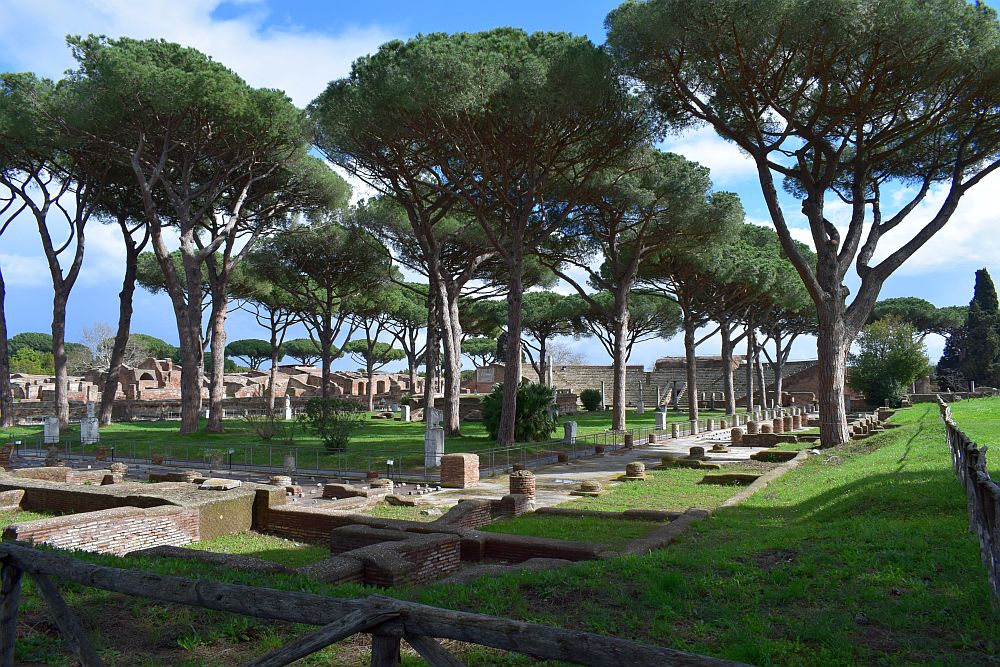
Wine Bar
Going deeper into the city, you will reach the world’s most well-preserved ancient wine bar. It resembles the setting of bars nowadays. There is a counter where you can order what you would like to have and a painting on top of it of the things on offer. In the case of the ancient people, they could only order wine, food and live music. On the side, there is a bench made out of stone where visitors could enjoy their food and drink and then head out to do their business. The wine bar is quite fascinating to be in, as it seems to be from the modern-day world, due to its good preservation.
If Roman ruins interest you, here are some other articles you might enjoy:
Temples
The ancient city of Ostia Antica, like any other city in ancient Rome, was full of temples. Thus, while walking around it you will encounter temples dedicated to Jupiter, Minerva, Juno, Cupid and Psyche, as well as Hercules. All of the temples are quite fascinating and well-kept, not to mention the mosaics that seem untouched for centuries. However, the most famous and best-preserved is the temple of Cupid and Psyche with its statue of the two gods kissing in the middle of it.
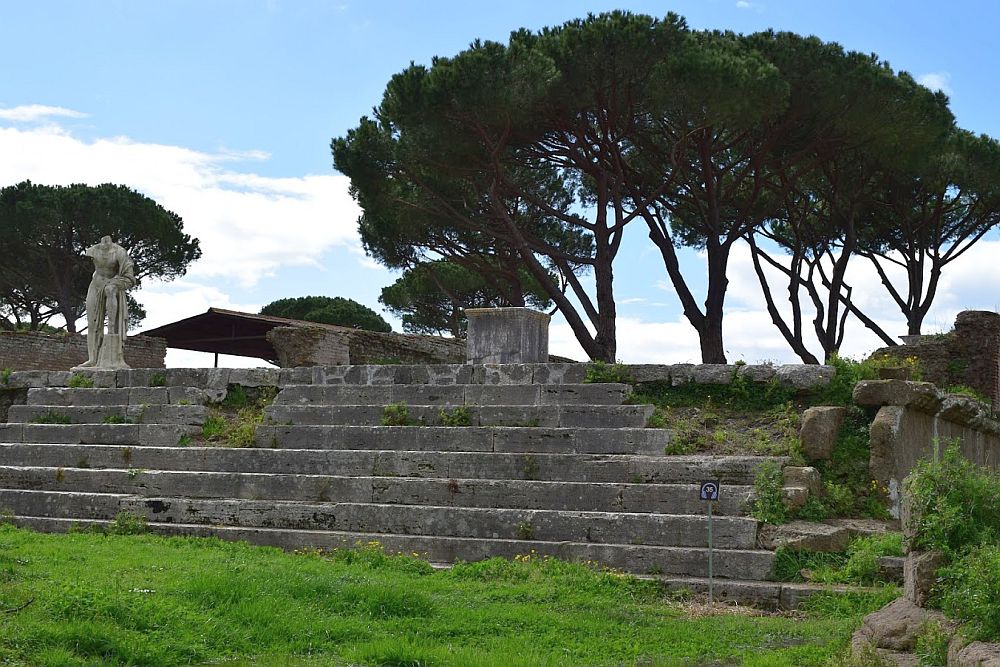
The House of Serapis
Another fascinating building to explore in the ancient city is the house of Serapis. It is multiple-story house, incredibly preserved and full of astonishing mosaics and paintings all around. It is believed that its first floor was used for trading and that there were many shops for local merchants. The second floor is believed to have been the residential part of the building, where the ancient Romans lived. The house of Serapis had its own bath complex, known as the Baths of the Seven Sages, which was richly decorated with mosaics, still visible to this day.
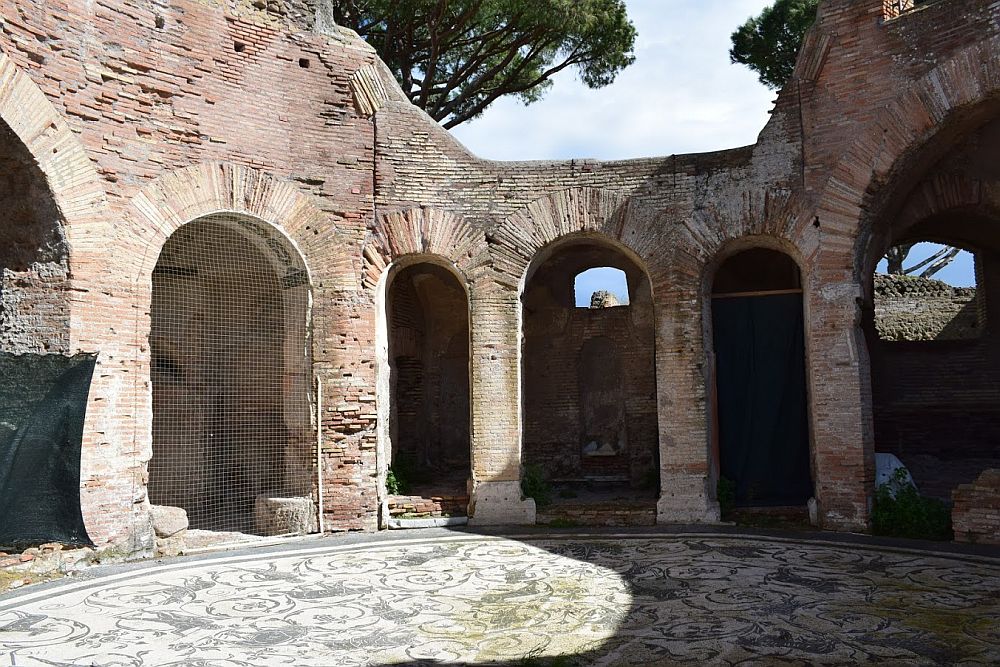
The Museum
Last but not least, one should not miss the museum of the archaeological complex of Ostia Antica. It houses most of the artefacts found in the city when it was first discovered, including original busts and statues. The greatest collection in the museum is for sure the one gathering the portraits of the Roman Emperors and their wives.
Ostia Antica is a truly astonishing ancient city that anyone should visit on their trip to Rome. It unveils the life of the ancient Romans, exactly as it was, and provides valuable information about the way things were done back then.
How to get to Ostia Antica?
The easiest way to get there from Rome is to catch a train. You can do that by taking the metro to Roma Porta Saint Paolo train station and then catching the train to Ostia Antica. The train ride costs €1.50 each way and takes around an hour to get to the archaeological site. Once off the train at the Ostia Antica stop, cross the bridge over the highway and you will be at the entrance to the ancient city.
Many of these guided tours include transportation from your hotel as well as entrance tickets.
If you’re looking for more day trips, there are some beautiful villages near Rome.
Tips for visiting Ostia Antica
Here are a few tips to consider for your day trip:
- Wear comfortable shoes. The pathways at the archaeological site are the original ones, including via Ostiense, which was created when the city was founded more than two thousand years ago.
- Apply sunscreen, as the sun can be pretty harsh there.
- Take a windproof jacket. It can become quite windy and cold.
- There is no option for leaving luggage at the site, so make sure to come without any.
- The site is open at 8:30-16:30 from the end of October until the end of February, 8:30-17:15 in March, 8:30-19:00 in April-September, and 8:30-18:30 in October.
- The price of the ticket is €12/$14.50 for adults and €2/$2.50 for EU citizens between 18 and 25.
Please share this article!
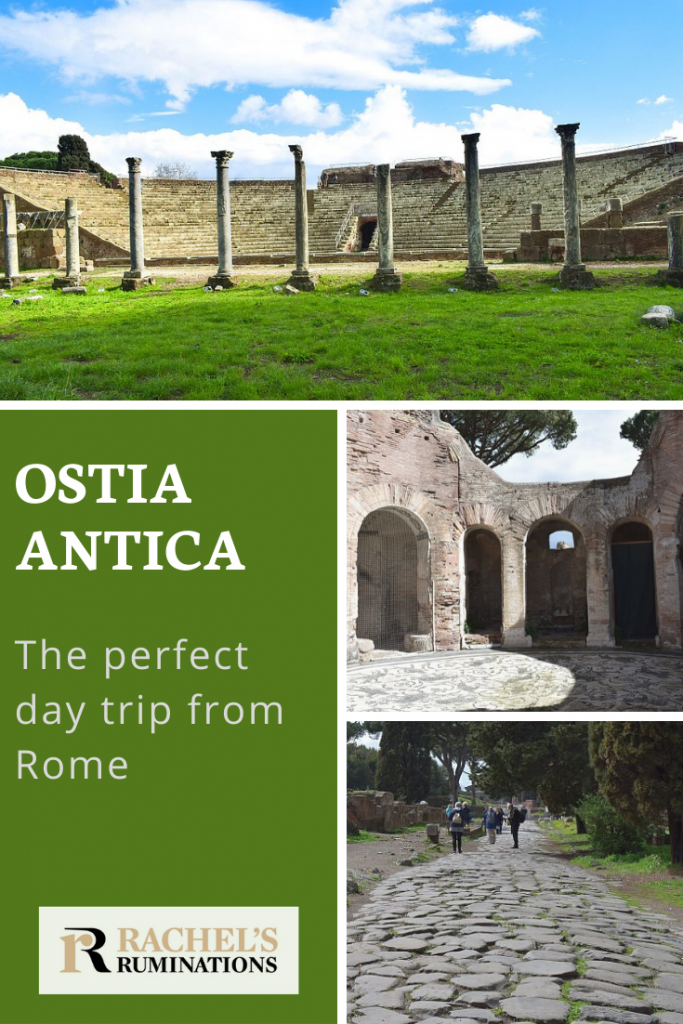
My travel recommendations
Planning travel
- Skyscanner is where I always start my flight searches.
- Booking.com is the company I use most for finding accommodations. If you prefer, Expedia offers more or less the same.
- Discover Cars offers an easy way to compare prices from all of the major car-rental companies in one place.
- Use Viator or GetYourGuide to find walking tours, day tours, airport pickups, city cards, tickets and whatever else you need at your destination.
- Bookmundi is great when you’re looking for a longer tour of a few days to a few weeks, private or with a group, pretty much anywhere in the world. Lots of different tour companies list their tours here, so you can comparison shop.
- GetTransfer is the place to book your airport-to-hotel transfers (and vice-versa). It’s so reassuring to have this all set up and paid for ahead of time, rather than having to make decisions after a long, tiring flight!
- Buy a GoCity Pass when you’re planning to do a lot of sightseeing on a city trip. It can save you a lot on admissions to museums and other attractions in big cities like New York and Amsterdam.
Other travel-related items
- It’s really awkward to have to rely on WIFI when you travel overseas. I’ve tried several e-sim cards, and GigSky’s e-sim was the one that was easiest to activate and use. You buy it through their app and activate it when you need it. Use the code RACHEL10 to get a 10% discount!
- Another option I just recently tried for the first time is a portable wifi modem by WifiCandy. It supports up to 8 devices and you just carry it along in your pocket or bag! If you’re traveling with a family or group, it might end up cheaper to use than an e-sim. Use the code RACHELSRUMINATIONS for a 10% discount.
- I’m a fan of SCOTTeVEST’s jackets and vests because when I wear one, I don’t have to carry a handbag. I feel like all my stuff is safer when I travel because it’s in inside pockets close to my body.
- I use ExpressVPN on my phone and laptop when I travel. It keeps me safe from hackers when I use public or hotel wifi.


